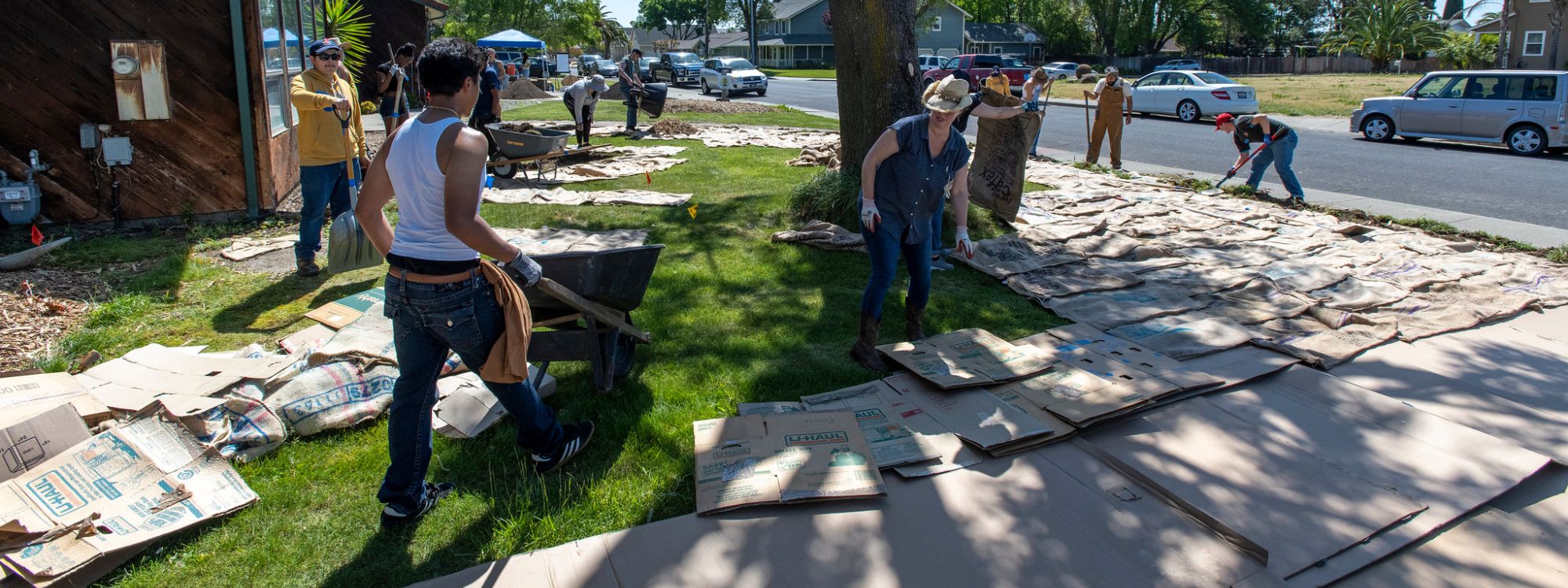Each election cycle, we feel like the stakes are higher—our window of opportunity to act on climate change is getting narrower by the day and our elected leaders should play a critical leadership role in tackling this critical challenge. And yet, the national election results are going in the opposite direction. We know that a second Trump presidency will be disastrous for many of the issues we care about.
2024 is, again, the hottest year on record. According to Carbon Brief, policies implemented by the incoming administration could add 4 billion tons to US emissions by 2030, burying the goal of containing global temperatures below 1.5 degrees Celsius. Trump has promised to prop up the oil and gas industry from the inevitable transition to cleaner energy. He’s threatened to limit post-disaster recovery aid for political purposes. This is a stark reminder that we cannot rely on the federal government or any outside forces to protect us and fight for our future.
But, in our field, hope and action are the only viable options. For now, we mourn the lost opportunity of federal leadership to invest and work collectively and quickly for the change we need.
As we enter this new political era, we are called to redouble our local, regional, and state efforts to build a more resilient Bay Area.
Greenbelt Alliance’s work is now more important than ever.
It is time for bold action and creative, cost effective solutions to address our biggest challenges and build the future we deserve. And this ambitious action will look different than it has in other eras. Zoning changes and permitting reform, for example, can accelerate the pace of change toward safer, more affordable housing and resilient landscapes in a critical way even without new investments coming from afar.
We invite you to join us in an action-oriented agenda to protect our future that will include:
- Reducing wildfire risk for existing and future residents
-
-
- Developing an innovative wildfire buffer around vulnerable communities using a patchwork-style greenbelt stewardship approach in Sonoma County.
- Reducing future vulnerability by not developing housing in high risk areas—such as the WUI—and accelerating critical new homes in existing cities, further from wildfire risk.
-
- Accelerating housing abundance
-
-
- Prioritizing multifamily housing, which is more energy and water efficient as well as naturally more affordable, in our existing cities.
- Through our leadership in the Common Ground Learning Series, presented by the Alliance for Housing and Climate Solutions, we are bringing diverse environmental and housing advocacy voices together to advance shared solutions across California.
-
- Building the leadership of the future
-
- Through our Resilient Roots program in Fairfield and Suisun City, we’ll lead climate and environmental education to build a robust network of tomorrow’s community leaders.
- Amplifying the positive and impactful leadership of local government staff in the Bay Area through our Hidden Heroes of the Greenbelt awards and event.
- Through our Resilient Roots program in Fairfield and Suisun City, we’ll lead climate and environmental education to build a robust network of tomorrow’s community leaders.
Voter Guide
Beyond the nail-biting presidential elections, there are local and regional races that will deliver impactful transformation to our lives in California and the Bay Area.
Among the 15 propositions and measures that Greenbelt Alliance assessed and endorsed this cycle, 10 resulted in wins. Check out our full voter guide.
Most impactful will be Proposition 4— also known as the California Climate Bond—which passed with 58% of the votes. This vital new policy will inject a historic $10 billion to fight climate hazards like flooding, droughts, and wildfire—while allowing the state to preserve precious natural resources and ensure the health and safety of our communities. This will be the largest investment and most significant financial commitment in the state’s history to address our worsening climate crisis.
At the local level, Measure Y in Petaluma to renew the urban growth boundary passed comfortably, with a supermajority (70%), reinforcing their historic leadership to preserve natural lands and drive growth within city limits—a critical strategy to protect the open spaces around cities that can help us build nature based protection for floods and wildfires. In Berkeley, voters chose Measure FF as an inclusive vision of infrastructure investment that benefits walkers, bikers, and bus riders as well as drivers. And the City of San Mateo voted for Measure T to make it easier to welcome new residents by building more multifamily homes in their communities.
As we wrap up another election cycle, we are called to action to double down on our efforts to overcome structural challenges that will bring about the change we want to see in our world. We are rolling up our sleeves, will you join us?
Header Photo credit: Karl Nielsen/Greenbelt Alliance




